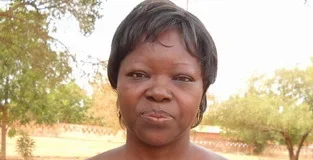
Global warming and the effects of climate change have taken center stage in the public consciousness more than ever, with the devastating events that we are all witness to in recent years…bush and forest fires, the melting of the world’s glaciers, the fast disappearing ozone layer, the appearance of new and evasive pest species, depletion of the world’s flora and fauna, pandemic cycles, mismanagement of waste, pollution…the list goes on…
How do we tackle, or confront, or educate and prepare ourselves to manage, or eradicate these global pandemics?
My name is Osei Kwabena and I am a broadcast journalist.
Strange things are happening, in this world of ours, that we did not dream were possible twenty, even ten years ago. Changes are happening to our climate, that we have not witnessed before and, frankly, they are frightening.
I will not go far to look for climate change; I’ll not start by trying to decipher the science behind melting glaciers, the depletion of the two Amazon rainforest, the extraordinary heatwave over Western Europe…No.
I will start from Accra 60 years ago when I was a six-year-old boy on board a state transport corporation coach, on my way to Kumasi with my father to visit my aunt, my father’s elder sister.
Kumasi, capital of the Ashanti region, is about 200 km. north of Accra, for those of you who do not know Ghana, and my story is a direct reminder of the world as it used to be, before global warming, or climate change, whatever you wish to call it. Now, listen carefully as we leave Accra, on our way to Kumasi… there is a… huuummm that fills the coach as it speeds away.
I have often wondered about this,,huuummmm sound.

To my 6-year old mind, it seemed strange, and to my adult mind now, I suppose it was just my imagination. But turning over the matter in my head, as I have done for many years now, I have come up with a logical explanation for this phenomenon.
I remember the humming sound began just after we had left Accra, maybe 5 miles, (or 8 km.) from Accra.
At that time, 1962, Pokuase was a little village on the right of the road that you can hardly see now because of this massive overpass.
After, or just before Nsawam, about 20 km. north, the humming intensified.
I remember there was a wall of great trees on either side of the road.
I can only describe it as a wall because the forest was dense, almost primeval-unexploited.
We were not yet at the stage where we destroyed the forest on an industrial scale.
For the next 200 km. or so to Kumasi this rainforest was only 3 interrupted by the occasional village or semi-urban settlement and I realize now that the hum was simply a physical phenomenon of the sound of the coach engine bouncing back into the coach off the forest wall.
If you travel this road today you will not experience this.
The forest is depleted.

Now, urban settlements are on either side of the road almost all the way to Kumasi.
Where there are no structures see the red, dusty earth, not even grass, the humid air of condensation in the morning, where the leaves and flowers are covered with a film of water…we see no more.
The gentle mist that rises up from the earth in Kumasi and formed a beautiful fog over the garden city is no more and we have to put up with poisonous exhaust fumes from vehicular traffic suspended in the air.
The major cities of Ghana are polluted and poor sanitation from open gutters has a lot to do with it.
Climate change and the heating of the planet is also real, and is intensifying.

The forests that captured rain and kept our soil fertile with round the year, natural compost, have been massacred to the greed of unscrupulous men and the ineptitude of politicians.
The forests absorb carbon, as well as peat lands…the sea…and this helped maintain the ecological balance, including atmospheric equilibrium of the planet before the excesses of the industrial revolution.
Industrial emissions have, among other things, contributed to the depletion of the ozone layer. which protects us from the dangerous effects of ultra violet rays from the sun.
However, a carbon source, or anything that releases carbon into the four atmosphere has the negative effect, under present circumstances, of trapping heat, because the forest that absorbed excess carbon is depleted, therefore planet Earth is warming up-the heat is trapped and the biggest culprit, or criminal, are the people who clear our forests, and the companies that produce and burn fossil fuels.
So, the atmosphere traps heat, radiating from earth to space as infrared heat, and this heat is absorbed by greenhouse gases, which leads to global warming, which leads to climate change.
Greenhouse gases…? Human-made emissions as mentioned…CO2…as well as methane gas…nitrous oxide…chlorofluorocarbons or CFCs which are man-made and employed as spray-can propellants, refrigerants…solvents…
That is why all the hullaballoo now is about addressing climate change-weaning ourselves away from the consumption-the addiction-to fossil fuels- oil!!

Now when we talk about the ozone shield, it is a layer of the atmosphere-called the stratosphere-about 10 km. up, that is highly impregnated with oxygen, and is being destroyed by these greenhouse gases.
Remember it is the ozone shield that protects us from the naturally forming ultra-violet rays from the sun.
Therefore, ozone depletion causes increased UV radiation, equals a weakened immune system…eye cataracts…cancers…
Technology is good, but it is wild animal when left to run free untamed, and in the hands of unscrupulous men whose only guide-and god-is Mammon…money…!!
Our elders tell us that some of us migrated from Mali.
It is said we were a savannah people…tall and thin…and this reflected in our diet, which 5 was cereal based.
So, you can imagine the turmoil we suffered, as we transited into the forests of what is today called Ashanti.
We had to learn how to change to a new diet…how to survive.
Imagine the beasts of prey in this dark and foreboding forest.
It is said, when we migrated those hundreds of years ago, we met a pygmy race that taught us how to eat the roots and tubers of plants, after boiling, and pounding them…fufuo…from cassava…yam.
They taught us the leaves of the forest…what to eat and what not to eat…tree bark…medicinal plants…
Eventually…as was the habit of these tall invaders from the north…we waged war against the pygmies, and the legend is that they fled to Cameroun, where they are to this day…
I have diverged a little, but the point is that, that frightful foreboding forest was eventually tamed by the ingenuity of men, to serve us…and to heal us. It was a source of nutrition…of healing…to give us cover from the burning sun.

It gave us timber to build…psychogenic plants to enhance our perception…
I can say the forest educated us…and O… lest I forget…a carbon sink to protect us.
The psychogenic plants the pygmies taught us, and those that we discovered over the ages are lost.
Or if they are not lost, they have lost their potency, because another thing the ancestors, or pygmies taught us, was never to exchange the leaf for money, never to commercialize the healing bark.
But those exhortations are now forgotten, and we have even gone a step further into the abyss with that terrible machine of destruction…
These days medicinal herbs and bark are sold by the roadside…in 6 markets…in tro tros and VIP buses, and in the city center, and of course that age-old admonition, that contained the potency of the herb, doesn’t hold anymore… …medicinal barks and leaves my grandmother taught me like nyamedua which we grind and rub over our body, for measles; kwakyeansuo-boil the leaves and bark and drink, for typhoid; boil the roots and leaves of gyama for ulcer; otie for piles; the over publicized prekese seed which, when boiled with dried plantain leaves cleanses the stomach.
Such is the wealth of knowledge our elders bequeathed us that we have failed to nurture.
As for the trees I have forgotten most of their names…Owamdua…Onyina…Esa…Anyendua, the witch’s tree, abamdua…much favoured by the carpenters; afena…which is heavy wood preferred for vehicle bodies and joinery.
I know their names, but I’ve never been able to ascertain their botanical names.
Some wood species are even coming under threat.
Global warming and pollution are not only affecting our fauna, but our flora as well.
Hundred-year-old Baobabs are dying from an affliction that researchers suspect is directly related to gloibal warming.
This is a portent of evil for our global flora when such an iconic sample of nature is coming under threat.
And it’s not only the baobab.

Tree species everywhere are coming under threat from climate change.
Rising temperatures are causing drought and wildfires and the appearance of invasive pests, the burning heat, sudden thunderstorms and other strange phenomena have contributed to habitat fragmentation.
Another tree of significance, the giant sequoia of North America has not escaped damage.
Iconic species like the common oak, birch and juniper trees 7 common in the global north.
If you take a trip to my home village in the Mampong Municipality of Ashanti, the landscape is flat and open with a preponderance of maize planted by the farmers in due season.
50 years ago, much of this land was lush tropical forest, full of cocoa plantations.
Climate change, bushfires, and overindulgence of pesticides and weedicides has transformed this patch of West Africa, so that you would think you were travelling through the Masai Mara.
I estimate that 80% of cocoa farms in Adidwan have been obliterated, and this change of landscape has been accelerated by that terrible machine of destruction that feeds the rapacious appetite of the global north for exotic timber…the chainsaw.
TO BE CONTINUED………………
By: Osei Kwabena




